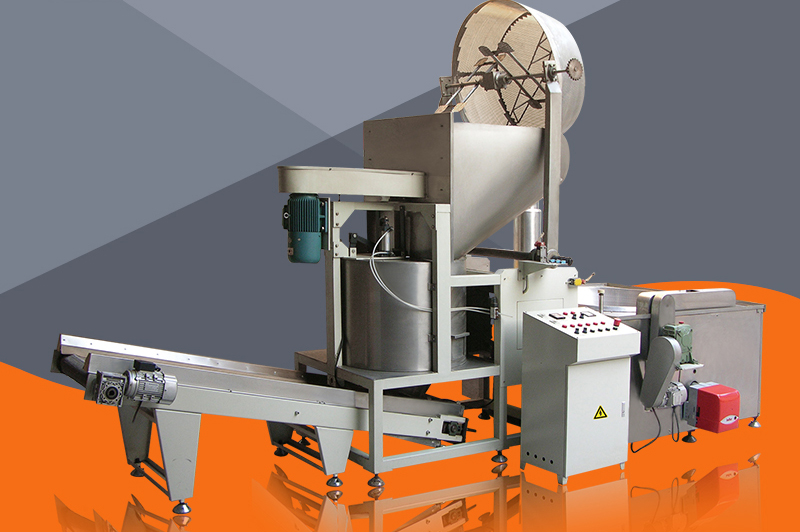Automatic fryer
This complete set of equipment is widely used, and can fry various foods such as potato chips, shrimp sticks, and rice noodles. This complete set of equipment integrates the functions of frying, oil rejection, and lifting. A series of actions are controlled by PLC centralized automatic control, which makes the control accurate and reliable, greatly improves the production efficiency, and saves a lot of human resources. Control system and reasonable stirring device to ensure the best frying effect of food.
Overview
This complete set of equipment is widely used, and can fry various foods such as potato chips, shrimp sticks, and rice noodles. This complete set of equipment integrates the functions of frying, oil rejection, and lifting. A series of actions are controlled by PLC centralized automatic control, which makes the control accurate and reliable, greatly improves the production efficiency, and saves a lot of human resources. Control system and reasonable stirring device to ensure the best frying effect of food.
This frying equipment consists of four parts: fryer, lifting screen, oil throwing and conveying. All controls are centralized in the control cabinet. The control cabinet is equipped with two control modes: automatic and manual. The frying process is controlled by PLC and runs automatically.
2. Main parameters
1. Dimensions (length×width×height): 4800×2230×2900mm2, production capacity: 150~250㎏/h
3. Installed power consumption: 5kw (fuel type) 58.5kw (electric power type) 4. Fuel consumption: 10~14㎏/h
5. Fuel burner: 120,000 kcal
6. Frying temperature: 190~220℃
7. The time of frying and deoiling: 3~20s is adjusted by the corresponding switch on the control cabinet 8. Self-provided air pump: 0~1.2Mpa
3. Installation, commissioning and maintenance
1. Connect the single machines to each other according to the schematic diagram of the equipment, and place them on a hard and flat ground, so that the frying screen can be completely dropped into the fryer. For the fuel type, properly connect the oil pipe and oil filter to ensure smooth oil supply and no oil leakage. Use the air pipe to connect the air pump to the discharge solenoid valve of the oil thrower, and do not leak air.
2. The outside of the fryer is stainless steel, and the inside is lined with refractory insulation materials. The heat source is generated by the burner or the electric heating tube at the bottom of the pot. The oil temperature is measured by the thermocouple in the pot and displayed on the temperature control meter. The temperature control meter The oil temperature in the oil pan can be set and controlled. Generally, when frying, the temperature control table sets the temperature to 190-220 ℃, and the heating switch is turned on, and the heating can be performed. The operation of the machine is normally open, so it is only controlled by a manual switch.
3. The automatic operation process of the lifting screen is: (the starting point is the highest position and the automatic knob is turned on) descending → feeding stop → descending to frying in the pot → ascending → oil pouring stop → ascending to the highest point unloading → descending to the starting point. This process is in In automatic mode, it is cycled, and in manual mode, it operates independently. The upper and lower positions are adjusted by the limit block on the rotating shaft of the frying screen and the limit switch. When adjusting, pay attention to the position of the lower limit of the frying screen. The frying screen is as close as possible to the bottom of the pot and the stirring sprocket on the screen is well meshed with the drive chain, so that It is best to drive the stirring wings to stir the fried food. The upper limit is the best when the frying sieve can pour out all the food into the oil thrower. These two limit switches are very important and must be checked frequently to prevent damage.
4. The function of the oil throwing machine is to centrifugally deoil the food entering the oil throwing barrel. When working, the food enters the oil throwing barrel and starts to rotate to remove oil. The fried food falls on the conveyor and is sent away. After the material is discharged, the bottom of the barrel falls back to its original position and closes, waiting for the next feeding, drying, and de-oiling. This process is also automatically controlled by PLC, which cooperates with the lifting screen.
Related Products
Related News
Submitted successfully
We will contact you as soon as possible





